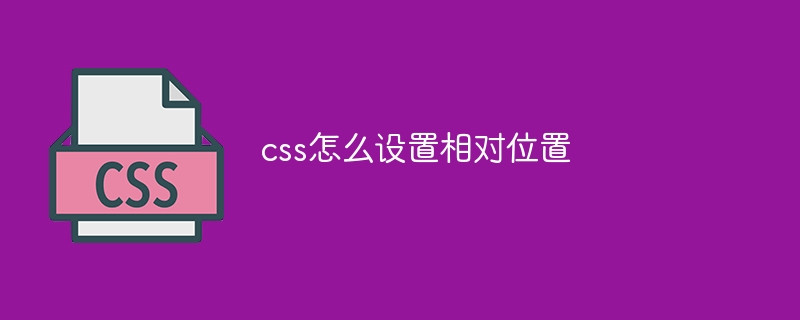

CSS (Cascading Style Sheets) is a language used to describe the style of web pages. In CSS, you can control the placement of elements on the page by setting relative positions. Below we will introduce how to use CSS to set relative position through detailed code examples.
First of all, we need to understand the concept of relative positioning. Relative positioning means that an element is positioned relative to its original position, but does not affect the position of other elements. Relative positioning is achieved through the "position" property of CSS, just set it to "relative".
Next, we will use a practical case to demonstrate how to set the relative position. Suppose we have a page that contains a container element (div) and an image (img) nested inside the container. We want to position the image relative to the container.
First, create the following structure in the HTML document:
<div class="container"> <img src="example.jpg" alt="示例图片" class="image"> </div>
Then, add the following code in the CSS style sheet:
.container {
position: relative;
}
.image {
position: relative;
top: 20px;
left: 50px;
}The above code indicates that we will The position attribute is set to relative so that the container element can be used as a reference point to position the inner elements. Then, we set the position attribute of the image element to relative, and offset the image by 20 pixels downward and 50 pixels to the right relative to the container through the top and left attributes respectively.
When the browser renders the page, the image element will be positioned relative to the container element, while other elements will not be affected.
In addition to using the top and left attributes, we can also use other attributes to control the relative position of elements. For example, by setting the right and bottom properties, you can position the element relative to the right and bottom of the container. At the same time, we can also use negative values to offset in the opposite direction.
It should be noted that relative positioning will only affect the visual performance of the element, but will not change the layout of the element. If you want to change the layout of an element and affect the position of other elements, you can use absolute positioning or fixed positioning.
To sum up, by setting the CSS position attribute to relative and combining top, left, right and bottom attributes, we can easily adjust the relative position of elements. This method is very commonly used in web design and can help us achieve a more flexible layout effect.
The above is the detailed content of How to set the position of an element in CSS. For more information, please follow other related articles on the PHP Chinese website!
 how to hide ip address
how to hide ip address
 The difference between arrow functions and ordinary functions
The difference between arrow functions and ordinary functions
 How to enable the same city function on Douyin
How to enable the same city function on Douyin
 How to open the download permission of Douyin
How to open the download permission of Douyin
 How to delete blank pages in word
How to delete blank pages in word
 How to cast screen from Huawei mobile phone to TV
How to cast screen from Huawei mobile phone to TV
 How to solve http status 404
How to solve http status 404
 How to connect to database using vb
How to connect to database using vb




